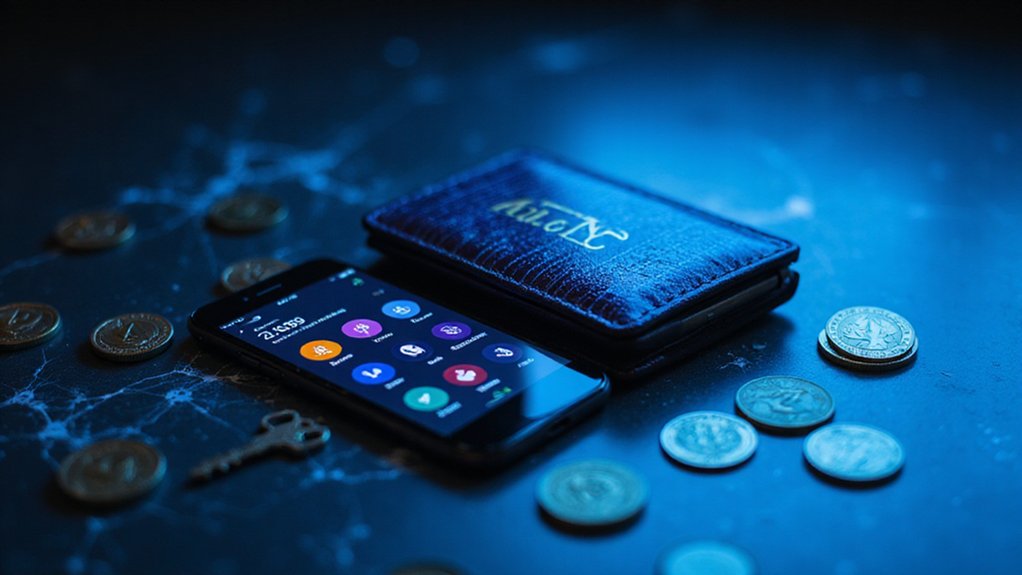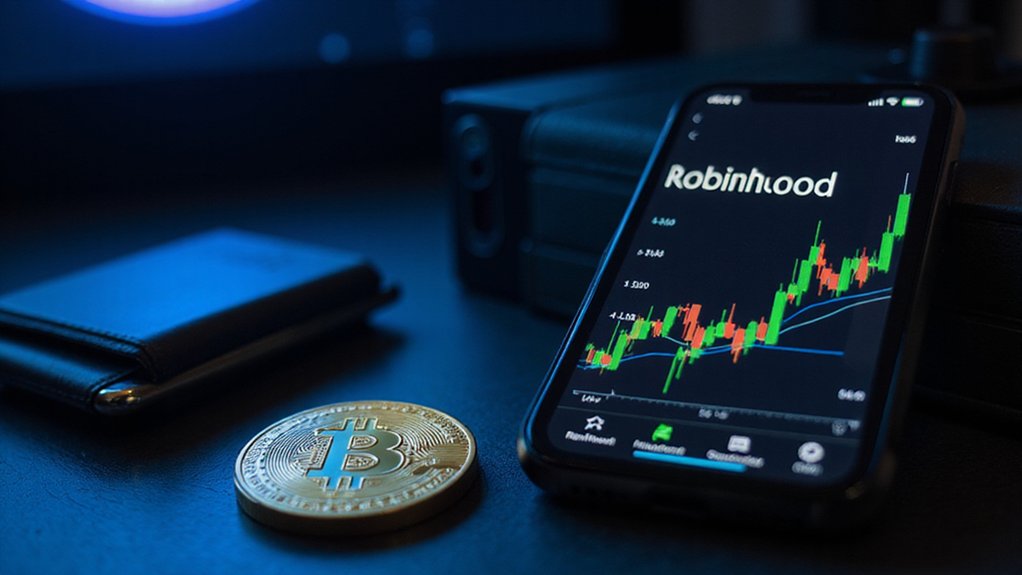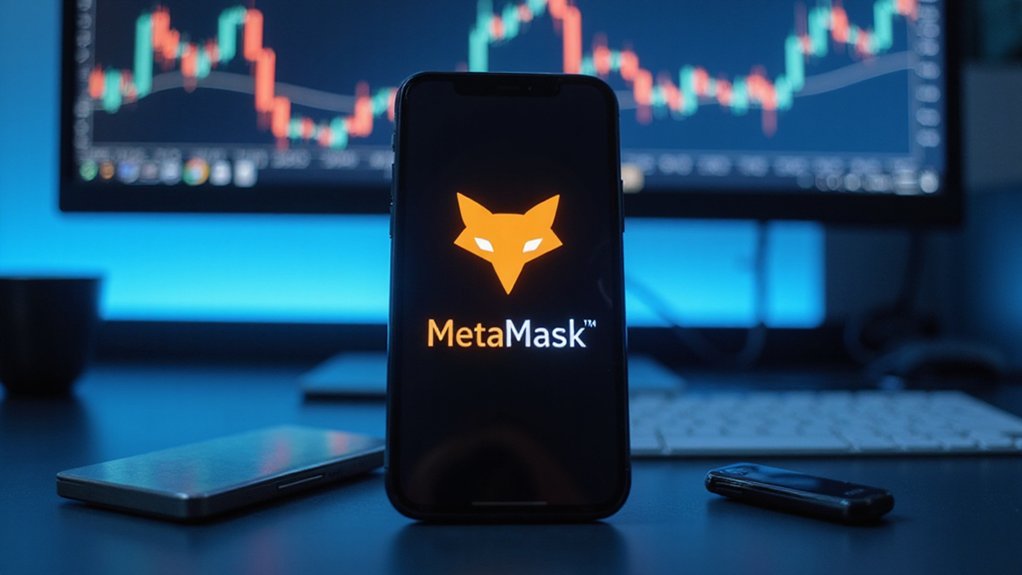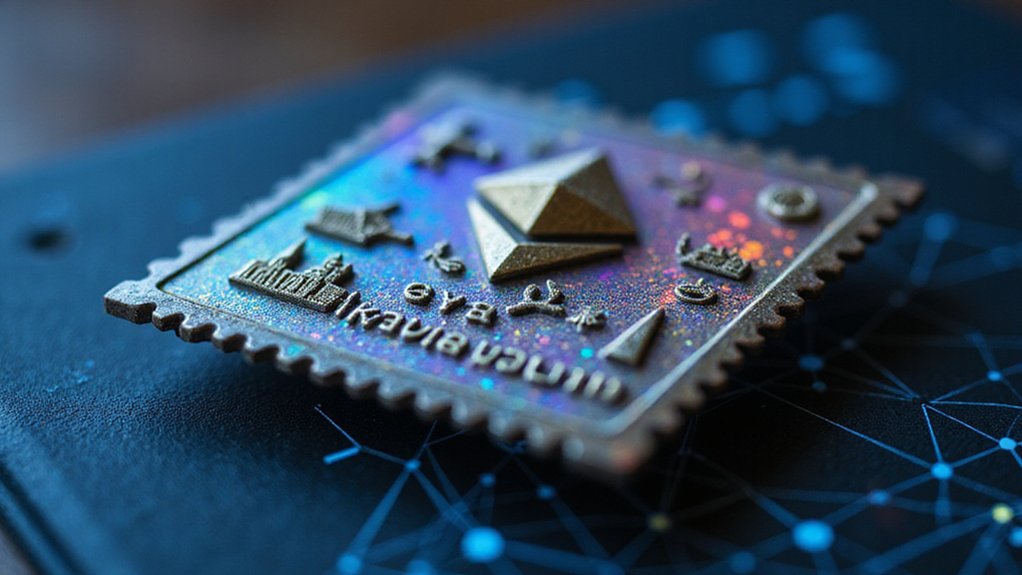A Web3 wallet functions as your sovereign identity in the decentralized blockchain ecosystem, transcending mere cryptocurrency storage. These non-custodial interfaces—available as browser extensions or hardware devices—empower users to control digital assets, interact with decentralized applications, and execute smart contracts across multiple blockchain networks. Operating on the principle of “not your keys, not your coins,” they embed sophisticated encryption and private key management, demanding vigilance over seed phrases to prevent the all-too-common digital-age tragedy of lost fortunes. The journey from technical curiosity to essential financial infrastructure continues unabated.

A Web3 wallet stands as the digital sentinel guarding the gateway to blockchain’s decentralized kingdom—a sophisticated tool that transcends mere cryptocurrency storage to become the user’s sovereign identity in the rapidly evolving Web3 ecosystem.
Unlike traditional financial instruments that rely on centralized authority (those quaint vestiges of Web2 thinking), these non-custodial interfaces empower users with unprecedented control over their digital assets, from fungible tokens to the increasingly ubiquitous NFTs that have captivated digital collectors and bewildered traditional art connoisseurs alike.
The architecture of Web3 wallets reflects their philosophical underpinnings—decentralization, interoperability, and user autonomy.
These digital repositories manifest in various forms, from browser extensions that seamlessly integrate with one’s daily internet peregrinations to hardware devices that store cryptographic keys in cold, offline sanctuary. Leading options like MetaMask provide essential functionality through seed phrase recovery when users need to restore access to their digital assets. These wallets also promote widespread adoption of blockchain technologies across multiple industries and uses.
Their multi-chain support enables fluid traversal across blockchain networks (Ethereum, Solana, et al.), a feature that proves indispensable as the digital asset landscape fragments into specialized ecosystems.
Beyond mere storage, these wallets serve as portals to decentralized applications, enabling real-time interaction with smart contracts that power DeFi protocols, play-to-earn gaming platforms, and the governance mechanisms of DAOs.
The sophisticated encryption and private key management embedded within these systems provide the security infrastructure necessary for financial sovereignty—though this same feature demands users maintain vigilance over seed phrases lest they join the unfortunate ranks of those who’ve lost access to digital fortunes.¹
Despite their revolutionary potential, Web3 wallets face adoption challenges stemming from technical barriers and security concerns.
The learning curve can prove steep for neophytes unaccustomed to managing private keys or handling blockchain transactions.
Users must remember that these wallets operate on the principle of not your keys, not your coins, emphasizing the fundamental responsibility of asset ownership in the decentralized web.
Nevertheless, as Web3 infrastructure matures, these wallets continue their evolution from niche tools for crypto enthusiasts to essential components of the digital financial landscape—bridging traditional finance and the tokenized future that beckons with both promise and complexity.
¹The crypto-sphere is littered with tales of forgotten passwords and misplaced seed phrases—digital-age tragedies of Shakespearean proportions.
Frequently Asked Questions
How Do I Recover My Web3 Wallet if I Lose My Seed Phrase?
Recovering a Web3 wallet without a seed phrase presents a formidable challenge.
Users should first contact the wallet provider’s customer support, though success varies considerably.
Data recovery tools might unearth wallet files from previous devices, while professional recovery services offer last-resort options (albeit at premium prices).
Prevention remains superior to cure—properly securing seed phrases across multiple physical locations would have rendered this predicament entirely avoidable.
The crypto-sphere rarely forgives such fundamental oversights.
Are Web3 Wallets Vulnerable to Hacking Attempts?
Web3 wallets are indeed vulnerable to various hacking attempts—an unfortunate reality in the digital asset ecosystem.
Smart contract vulnerabilities, phishing schemes, malware, and re-entrancy bugs represent just a fraction of the potential attack vectors.
While cold storage solutions mitigate certain risks, no wallet exists in a vulnerability vacuum.
The security posture of these interfaces ultimately depends on a combination of robust code auditing, developer vigilance, and—perhaps most importantly—user behavior (that perennial weak link in security chains).
Can I Use One Web3 Wallet Across Multiple Blockchains?
Yes, many modern Web3 wallets support multiple blockchains within a single interface.
Wallets like MetaMask, initially Ethereum-exclusive, now accommodate various EVM-compatible chains including Binance Smart Chain, Polygon, and Avalanche.
This multi-chain functionality enables users to manage diverse assets, execute cross-chain swaps, and interact with dApps across networks without juggling multiple wallets.
The convenience comes with trade-offs, however—increased security risks if compromised and potential feature limitations on less-supported chains.
What Fees Are Associated With Web3 Wallet Transactions?
Web3 wallet transactions primarily incur network fees (or “gas fees”), which compensate validators for processing operations on the blockchain.
Unlike traditional financial institutions with their monthly maintenance charges and percentage-based transfer fees (how quaint!), Web3 wallets typically don’t impose platform fees themselves.
These network costs fluctuate with congestion levels—sometimes reaching eyebrow-raising heights during peak periods—and must be paid in the blockchain’s native currency, which necessitates maintaining diverse token holdings across multiple chains.
How Do Web3 Wallets Integrate With Decentralized Applications (Dapps)?
Web3 wallets integrate with dApps through a multi-step process that begins with a connection request, typically triggered by a “Connect Wallet” button.
Upon user authorization, the wallet establishes a cryptographic link—without exposing private keys—that enables transaction signing, smart contract interactions, and asset management.
This connection, maintainable across sessions, provides dApps with permissioned access to addresses and balances while requiring explicit user confirmation for subsequent transactions—a dance of convenience and security that underpins the decentralized ecosystem.









